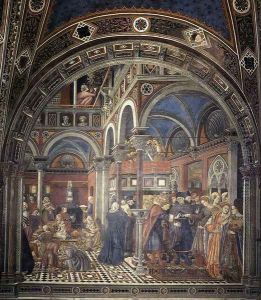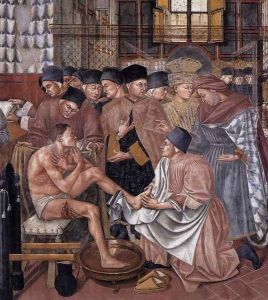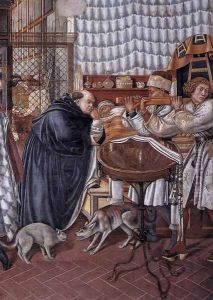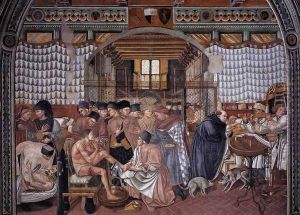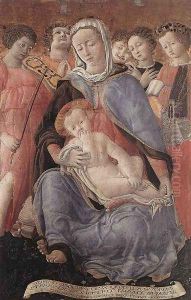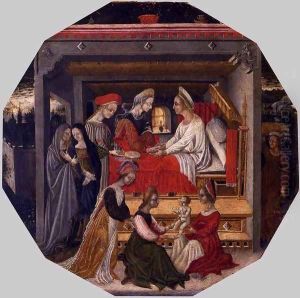Domenico Di Bartolo Paintings
Domenico di Bartolo, an Italian painter of the Sienese School, was born in Asciano, near Siena, in 1400 and died in 1447. His life and work fall into the early part of the Quattrocento, a period that marked the transition from Medieval to Renaissance art in Italy. Domenico's contributions, though not as widely recognized as those of some of his contemporaries, played a significant role in the development of Sienese painting during this transformative era.
Domenico was trained in the tradition of Sienese art, which was known for its more decorative and ornate style compared to the Florentine approach that emphasized linear perspective and anatomical precision. This training is evident in his use of color, intricate patterns, and emphasis on narrative detail. Despite the strong local traditions, Domenico's work also shows the influence of the Renaissance's evolving artistic ideals, including an interest in spatial representation and the human form.
One of Domenico di Bartolo's most celebrated works is his contribution to the decoration of the Pellegrinaio (the Pilgrims' Hall) in the Hospital of Santa Maria della Scala in Siena, where he painted a series of frescoes depicting the care of the sick and the corporal works of mercy. These frescoes are notable for their detailed portrayal of early 15th-century life and their expression of Christian charity, showcasing Domenico's skill in composing complex narrative scenes.
In addition to his frescoes, Domenico worked on several altarpieces and panel paintings, though fewer of these survive. His style in these works reflects an increasing interest in perspective and volume, indicating his engagement with the broader changes occurring in Italian art at the time.
Despite his death at the relatively young age of 47, Domenico di Bartolo's legacy persisted through his contributions to the Sienese School and the early Renaissance. His works provide valuable insights into the social and religious life of his time and demonstrate the transitional nature of 15th-century Italian art, bridging the gap between the medieval past and the Renaissance future.
